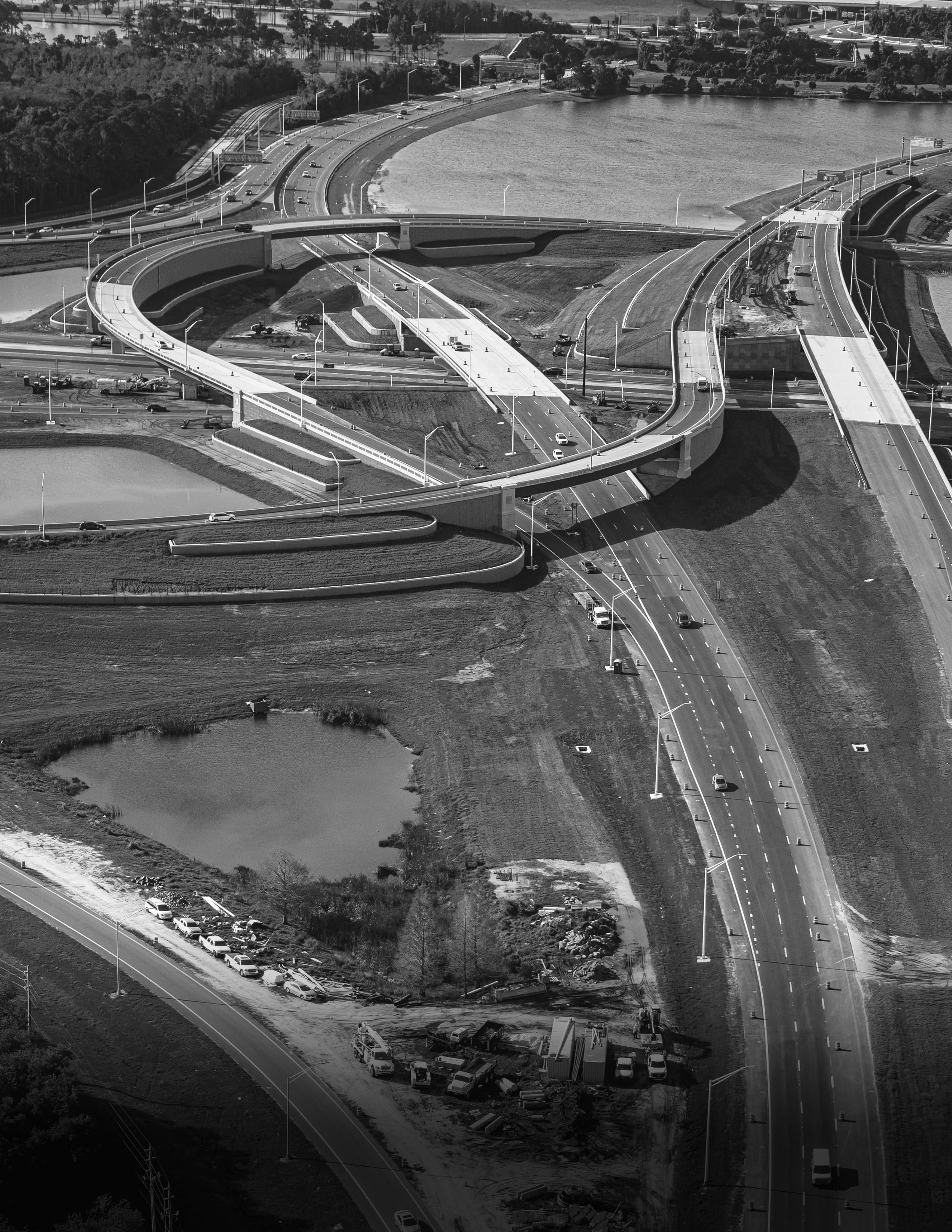TRANSPORTATION
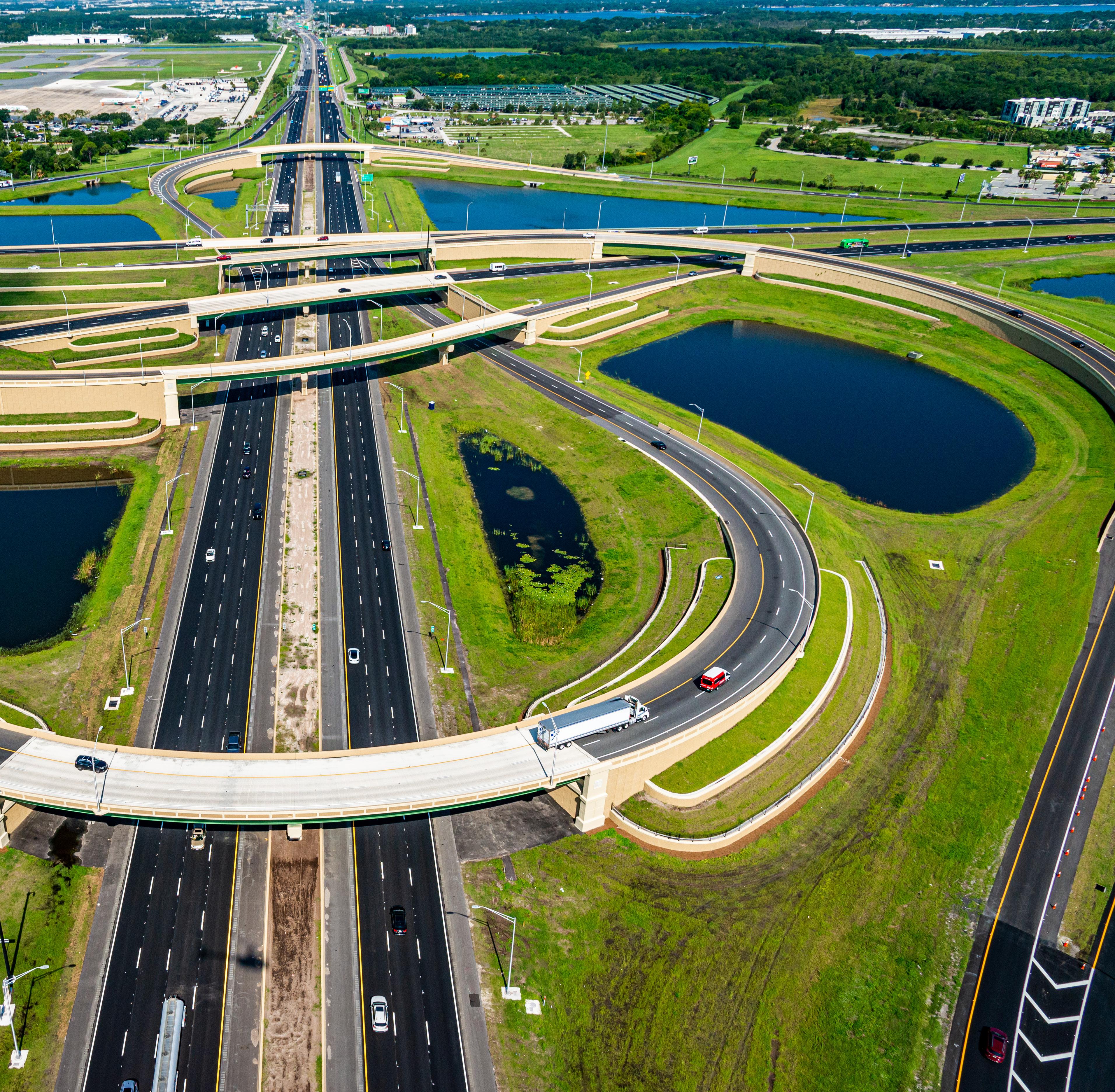
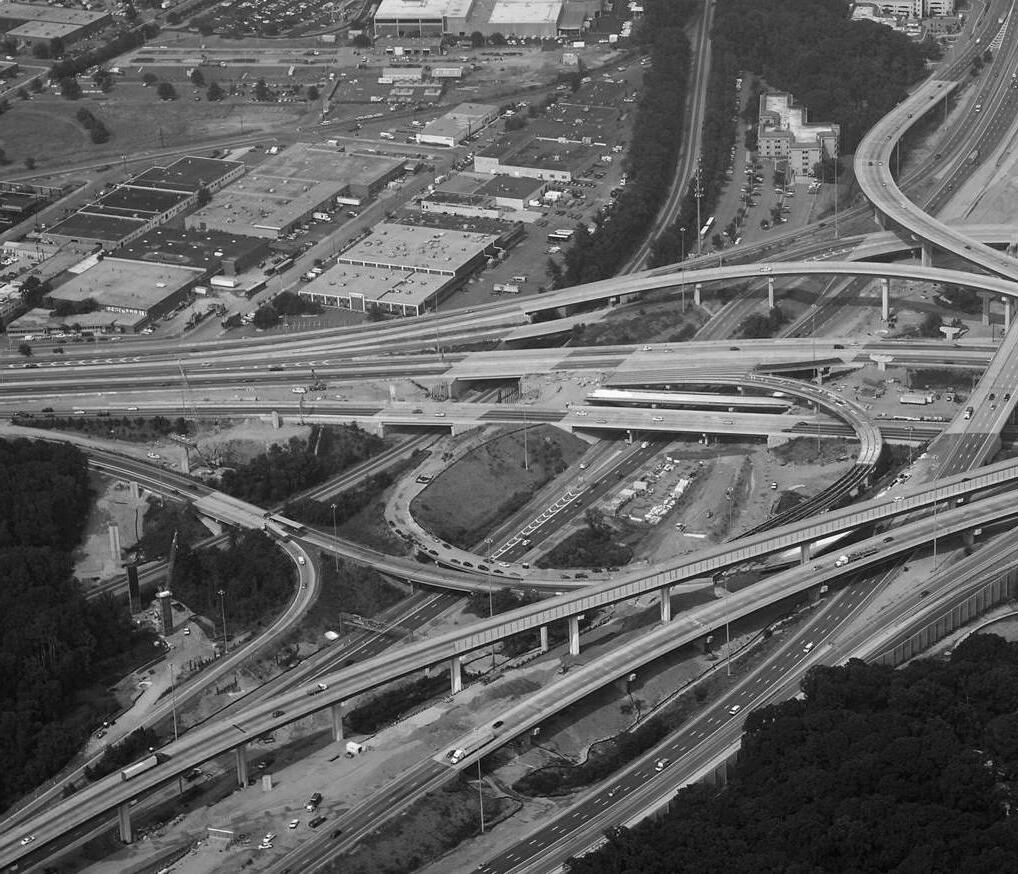

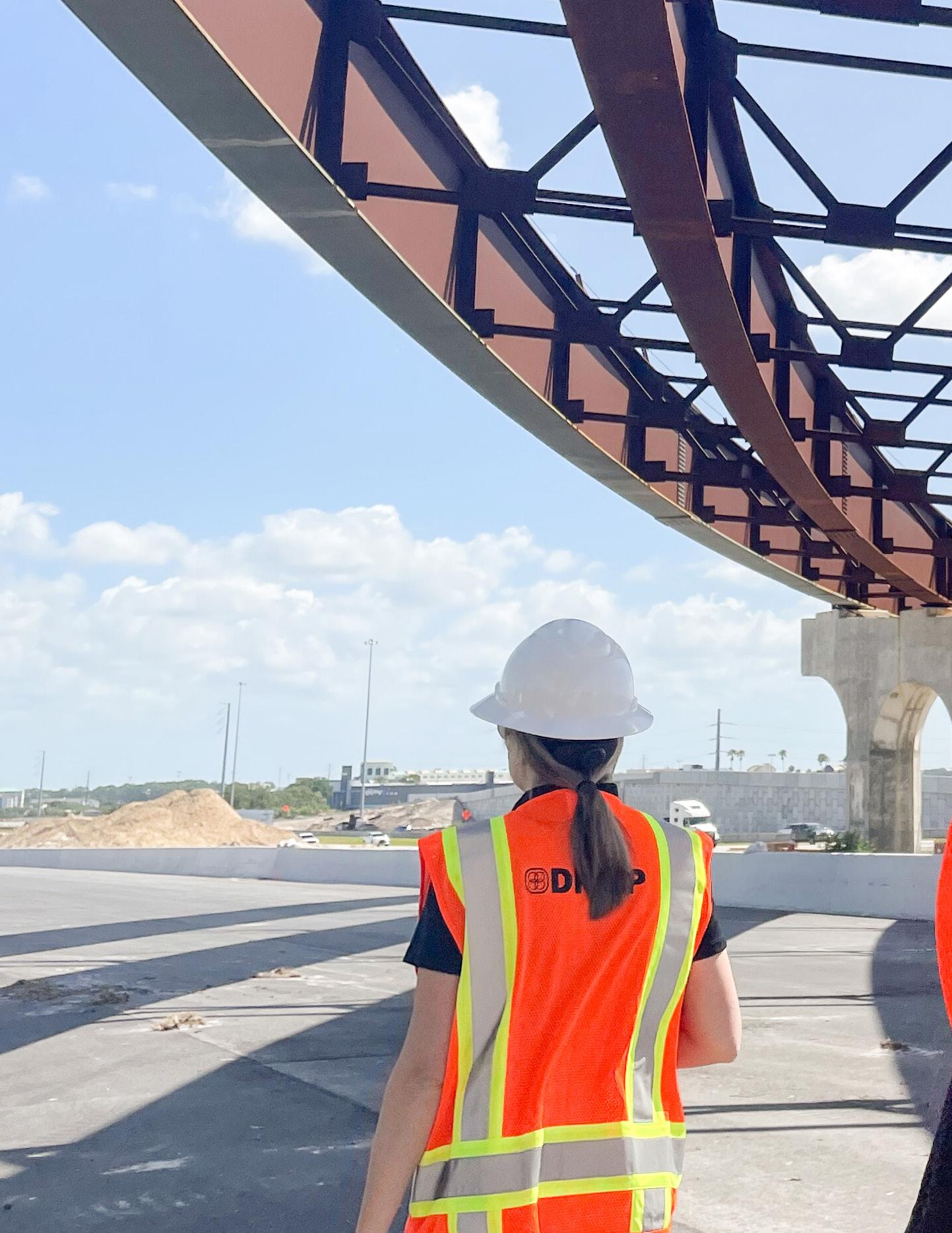





As a leader in transportation, DRMP recognizes that modern infrastructure challenges require creative design approaches that optimize safety, efficiency, and environmental compatibility. From improving limited access facilities to designing a new alignment that connects cities, we bring decades of transportation expertise and client insight to make a difference for the traveling public.
DRMP’s planners, scientists, engineers, and designers leverage their expertise to resolve unique challenges and deliver innovative solutions. Our team sees each project as an opportunity to provide counsel to our clients in the development of context-sensitive design that is technologically advanced, efficient, safe, and seamlessly moves people and goods to their destinations.
DRMP’s primary goal is to enhance roadway systems across North America by sparking the ingenuity of our staff and continuing to build upon our decades of successful project delivery.
• Drainage
• Environmental/Permitting
• Intelligent Transportation System (ITS)
• Lighting
• PD&E/NEPA
• Roadway
• Signalization
• Signing and Pavement Marking
• Structures
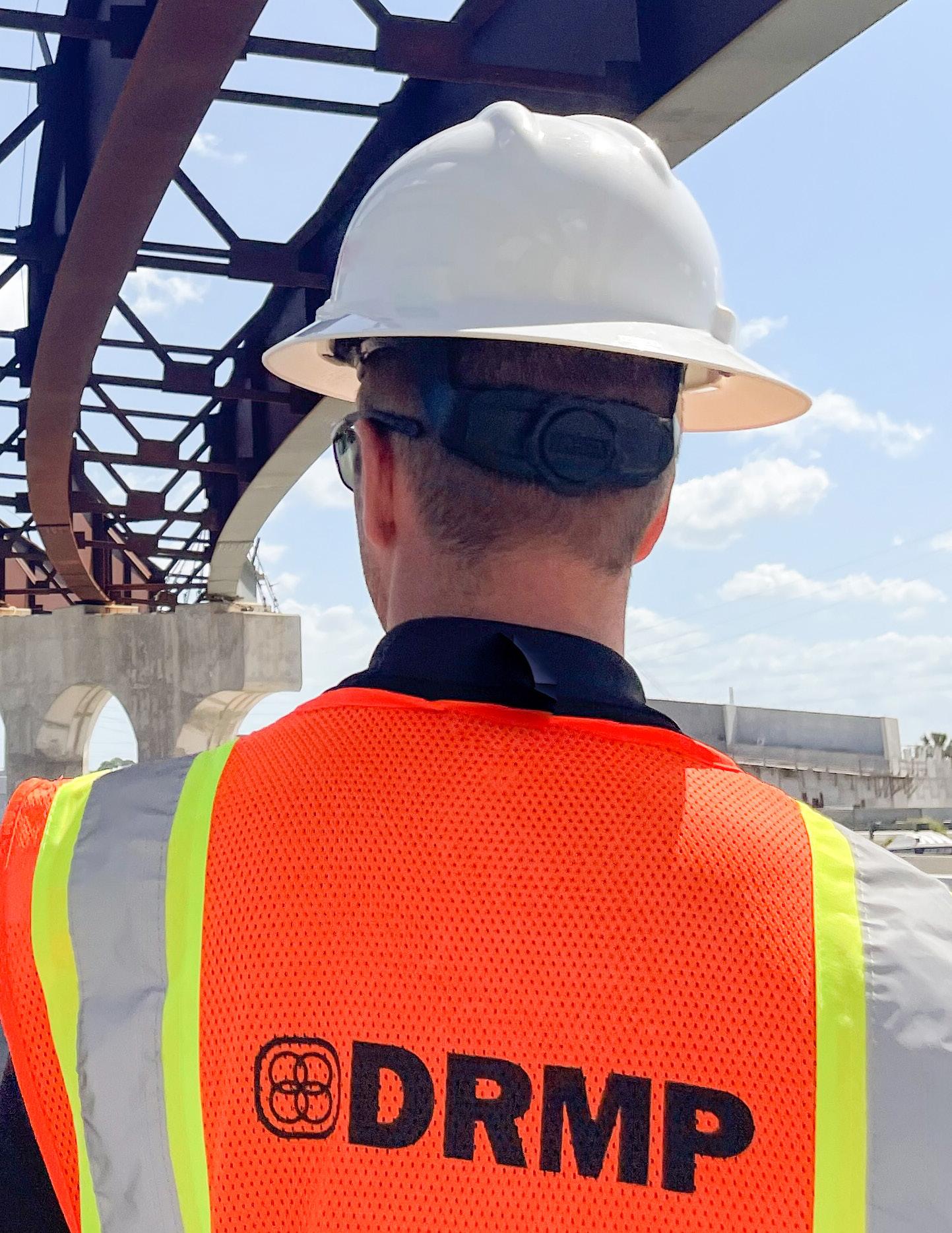
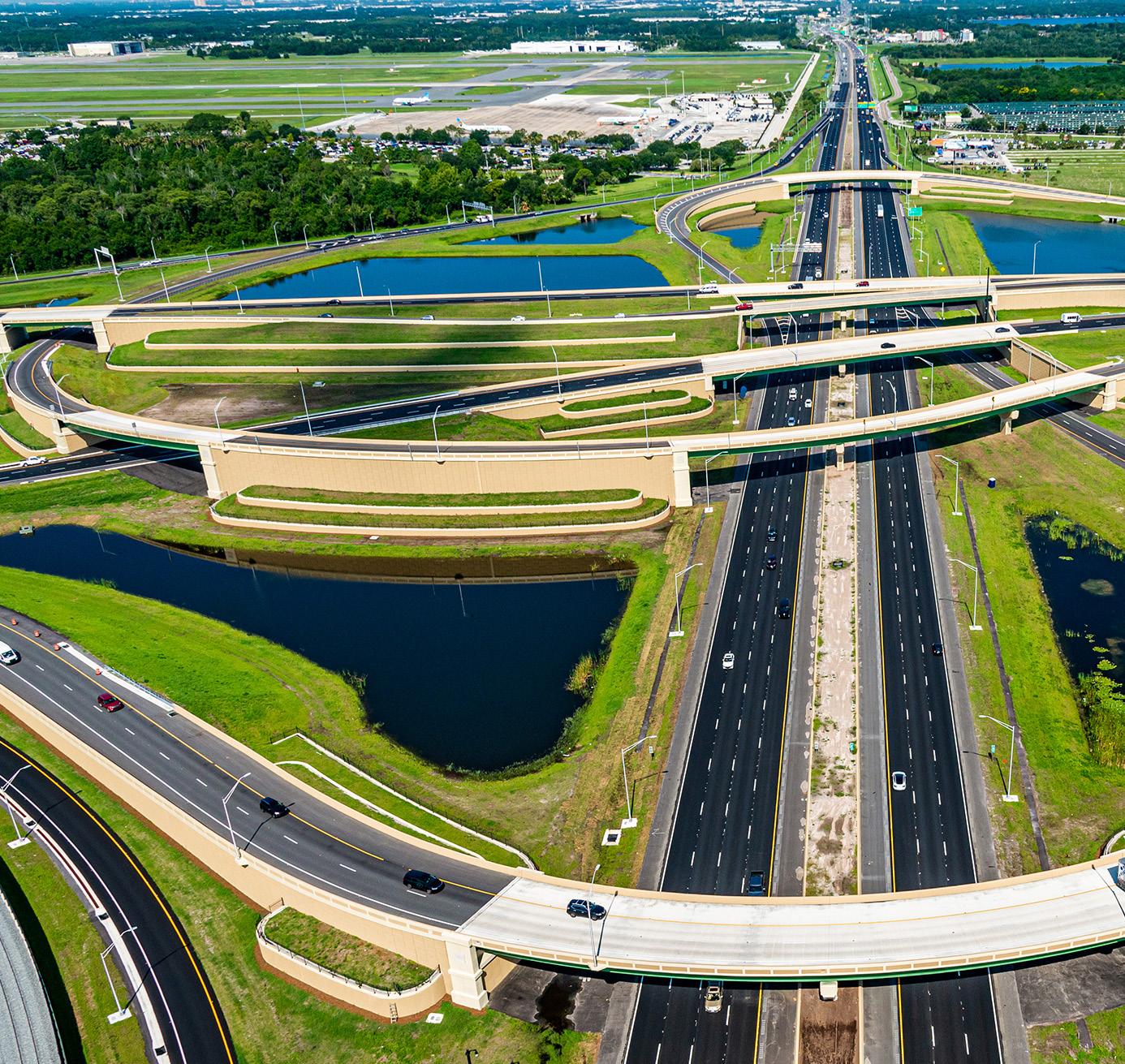

DRMP provided transportation engineering for the reconstruction of the interchange and widening of SR 528 from four lanes to six lanes with an auxiliary lane eastbound to Goldenrod Road and westbound to Conway Road. This project included construction of seven new bridges using a mix of steel box girders and concrete Florida U-Beams as well as the replacement of one box culvert. The project features enhanced aesthetics common to CFX roadways including a planted median separated by a barrier wall, planter walls adjacent to the ends of the bridges, pylons at the bridge abutments, and many areas for landscaping.
The SR 528/SR 436 interchange serves as the northern entrance of the Orlando International Airport, which currently experiences record passenger growth, welcoming over 50 million visitors in 2019 and becoming the busiest airport in Florida. This, coupled with the record population growth in Central Florida, created the need to provide additional capacity along SR 528 and at this interchange. This project also involved extensive coordination with the Greater Orlando Aviation Authority, Federal Aviation Administration, and Brightline.
The reconstructed interchange provides an additional lane of capacity at each of the critical movements within the interchange as well as additional lanes of capacity along SR 528 and semidirectional flyovers for all movements to better serve the growing airport and overall region.
2022 FTBA Best in Construction - Expressway Authority Project
2023 ACEC Florida Engineering Excellence Honor Award
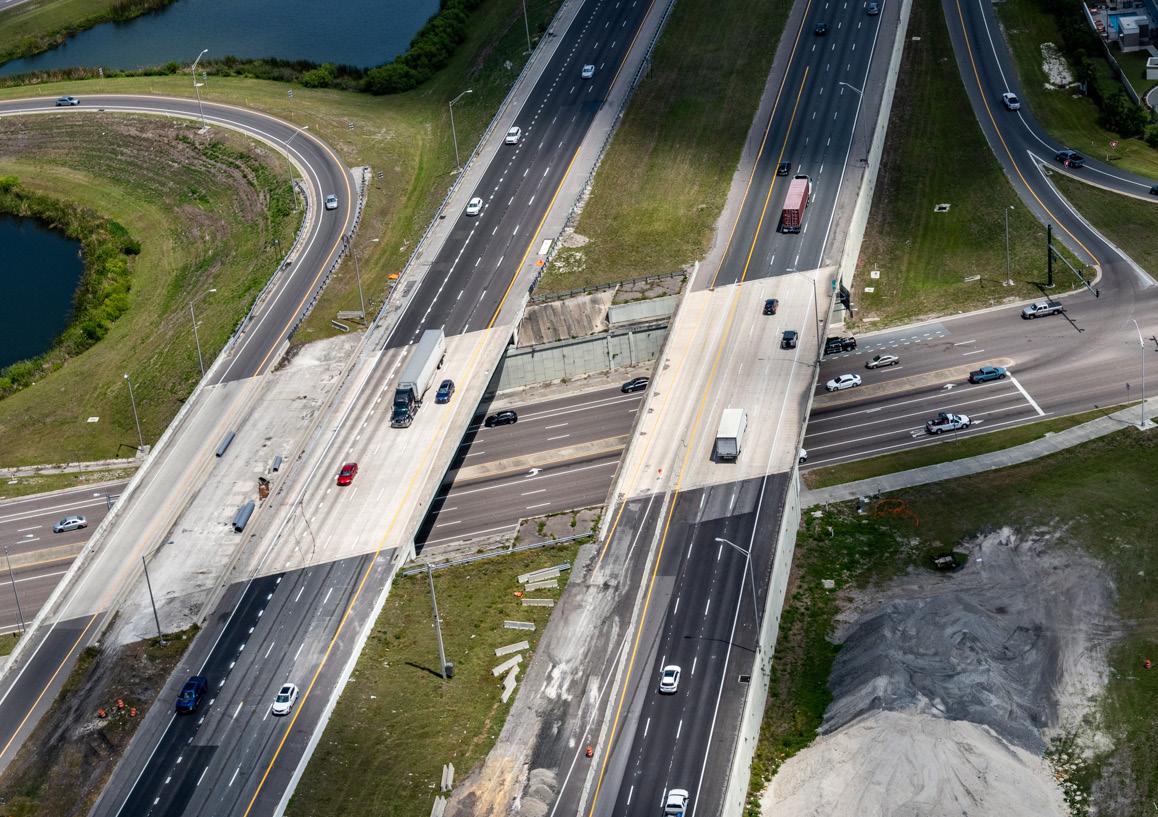
DRMP served as the lead designer for this new 2.63-mile limited access toll road and system-tosystem interchange that connects I-4, SR 417, SR 429, and accommodates future express lanes. This $263.3 million design-build project includes 20 new bridges and two bridge widenings, with bridge types being a combination of single and multi-span bridges, concrete Florida-I Beams, and steel plate girders, and 25 stormwater management facilities to address water quality, attenuation, and floodplain impacts.
Our team’s alternative technical concepts provided $25 million in project cost savings, improved operations and safety during and after construction, reduced bridge deck area by 200,000-SF, preserved four existing bridges, and minimized overall impacts and long-term maintenance costs. Other project design elements included complex maintenance of traffic, drainage design, permitting, signing and pavement marking, lighting, signalization, intelligent transportation systems, landscape, geotechnical, tolling, and surcharge areas to consolidate deep muck.

SR 589 (Suncoast Parkway 2) is a $135 million project in Florida’s Hernando and Citrus counties. This new proposed 4-lane Electronic Toll Collection (ETC) facility will continue the Suncoast Parkway from the current limited access highway’s ending at US 98 up to SR 44. SR 589 is a key north/south limited access highway lining the west coast of Florida and requires an extension for future accessibility accommodations and alleviating other north/south over capacity roads in Citrus County, Florida. The project goes through a portion of Withlacoochee State Forest, which posed an added challenge to the project.
DRMP designed a 9-mile section of this new limited access roadway, from the end of the existing Suncoast Parkway at US 98 to just south of Grover Cleveland Boulevard as one part of an overall proposed 27-mile extension of the Suncoast Parkway. The project includes five new bridge sites along SR 589 and one pedestrian bridge site over US 98, all using Florida I-Beams. Three of the sites (US 98, CR 480 and West Glen Street) consist of twin overpass structures along SR 589. The West Cardinal Street crossing consists of a 2-span structure over SR 589 with aesthetic piers. The final site consists of twin bridges over a Wildlife Crossing. The design includes full interchanges at US 98 and West Cardinal Street.
The DRMP team also prepared a reevaluation document which updated an approved 1998 State Environmental Impact Report (SEIR). In addition, the DRMP team led the environmental work and permitting for the entire 27-mile corridor. This extension of Suncoast Parkway accommodates growth north of Tampa along Florida’s west coast while alleviating state forest environmental issues.
2022 FTBA’s Best In Construction Award in Rural Category
2023 APWA Florida’s Project of the Year Award in the Transportation Category SR 589
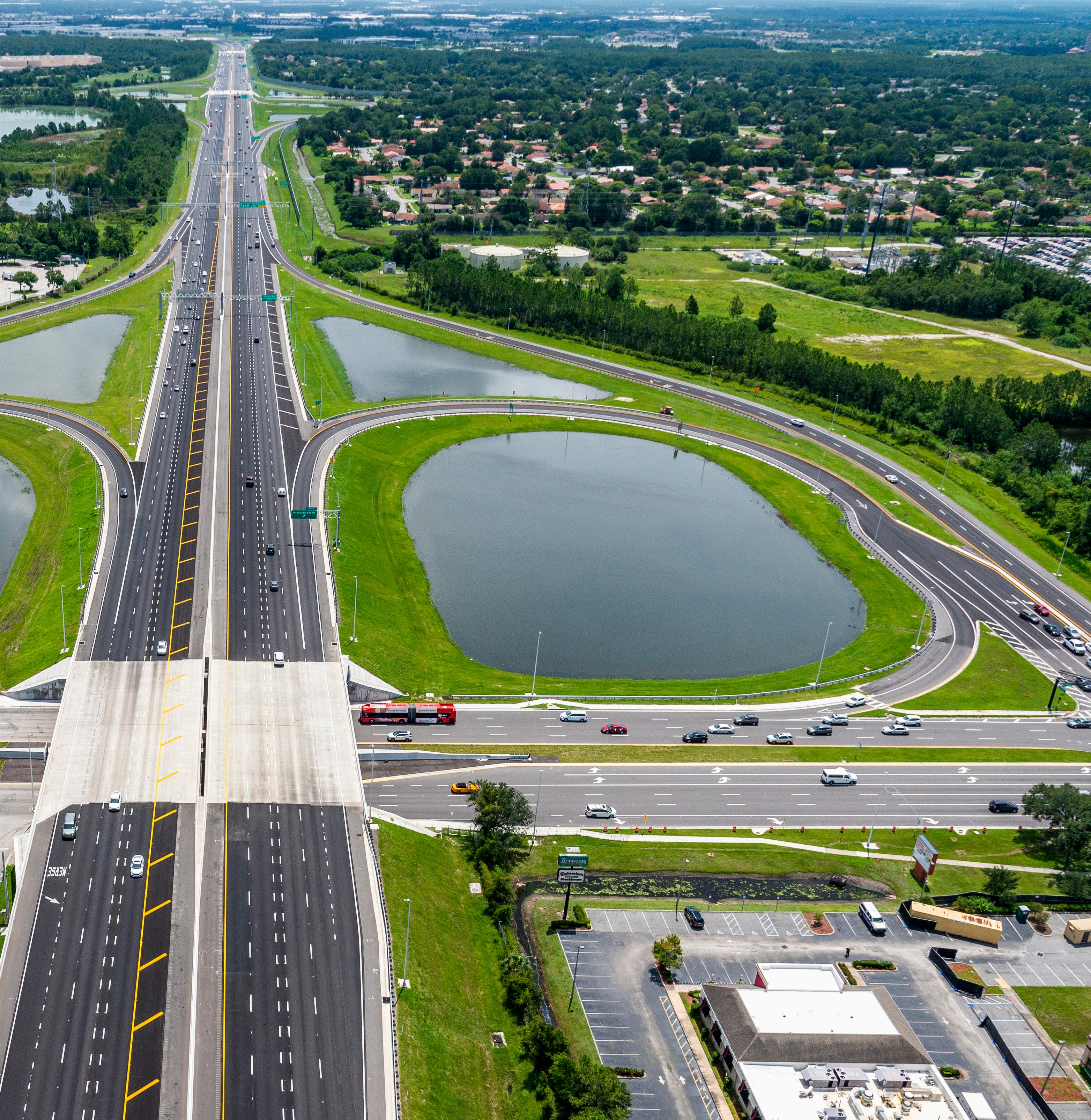
DRMP provided design services for the $140 million SR 528 (Beachline) widening project from Interstate-4 to McCoy Road in Orange County, Florida to relieve congestion by improving capacity on the major thoroughfare where 85,000 commuters and counting drive daily. SR 528 is a major route between the Orlando attractions and Orlando International Airport. The project has been designed and constructed in a number of phases.
In 2002, the original design included evaluating widening 8-miles of SR 528 from 4-lanes to 8-lanes and the preparation of construction plans for a 6-lane facility. These limits were from I-4 to McCoy Road. The project was subsequently broken into smaller construction projects. The first project constructed a new electronic tolling gantry, which replaced an existing cash toll plaza. The second project widened 4 miles from 4-lanes to 6-lanes from Florida’s Turnpike and McCoy Road and construction was completed in 2008. This segment included inside and outside roadway widening, a new ramp bridge at CSX Spur and bridge widenings at Florida’s Turnpike, US 441, Landstreet Road, CSX Mainline, Orange Avenue, and McCoy Road. The project also included environmental permitting, signing and pavement markings, lighting, ITS and right-of-way mapping. The design of the third project widened 4-miles from I-4 to Florida’s Turnpike from 4-lanes to 8-lanes with bridge widenings at I-Drive Universal Boulevard and John Young Parkway, with two new ramp bridges at John Young Parkway; and a replacement bridge over Shingle Creek. The project also included environmental permitting, design of a new toll gantry, signing and pavement markings, lighting, and ITS.

A final project was designed to widen the 4 miles from Florida’s Turnpike to McCoy Road from 6-lanes to 8-lanes by adding one lane into the median. This project includes bridge widenings at Florida’s Turnpike, US 441, and Landstreet Road, as well as modifications to the existing toll gantry and existing toll plazas. This project provided the roadway with much needed capacity and safety improvements. This project improved capacity between Orlando’s tourist corridor and the Orlando International Airport.
2021 American Council of Engineering Companies (ACEC) Florida - Engineering Excellence Grand Award in Transportation
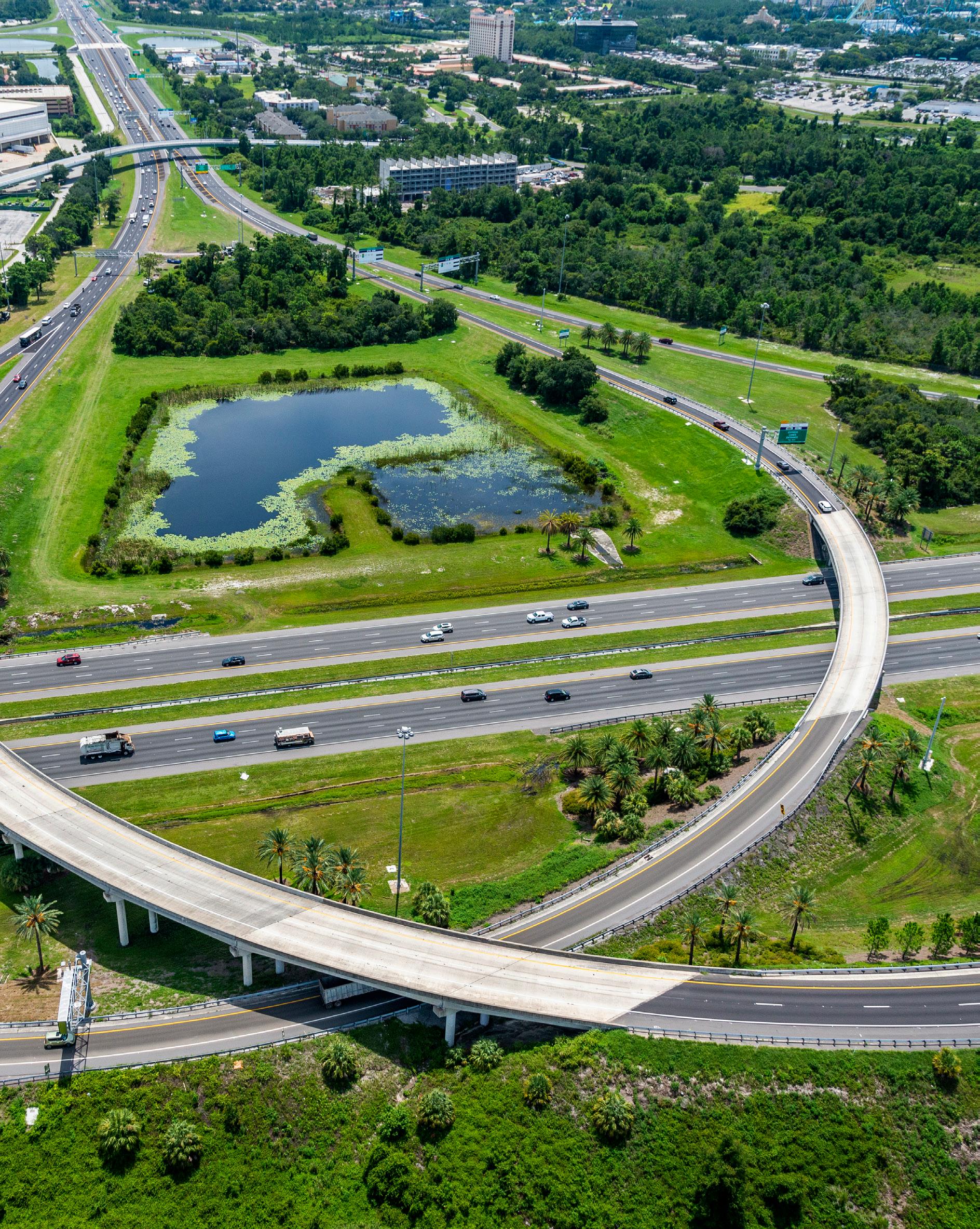

DRMP’s transportation professionals provided comprehensive transportation engineering for a $78 million widening of a limited access toll facility from 4 lanes to 6 lanes, continuing the overall widening of SR 408 from downtown Orlando to the eastern roadway terminus at SR 50. The project included interchange modification with the reconstruction of two ramps at Rouse Road, existing mainline toll plaza modifications, one new ramp toll plaza, three bridge widenings, and one bridge replacement over Alafaya Trail. The widening alleviates congestion at the current point of lane reduction, adds capacity with additional travel and auxiliary lanes, and improves safety with increased clear zones, wrong-way detection, and guardrail height. There are four existing SR 408 bridge crossing sites including the Little Econlockhatchee River, Rouse Road, Kehoe Boulevard, and Alafaya Trail. The first three sites were minor bridge widenings and the last required a bridge replacement. Additional design includes highway design, drainage, structures, intersections, interchanges, toll plazas, temporary traffic control plans, lighting, intelligent transportation systems (ITS), signalization, signing and pavement marking, and utility coordination.


This new systems interchange connects SR 429 to SR 516, and is a new 4-lane limited access toll facility that extends to US 27. DRMP’s transportation experts designed a .9 mile segment of roadway improvements along SR 429 including widening, adding ramps, milling and resurfacing of the remaining existing roadway, a new dual teardrop roundabout at the interchange with Valencia Parkway, drainage, intelligent transportation systems (ITS), lighting, signing and pavement markings, and tolling.
This interchange has five new bridges, two using concrete Florida-U Beams, and three using steel box girders. Four bridge widenings are included, three using Florida-I Beams and one uses steel I-girders.
The project was permitted with Florida Department of Environmental Protection and South Florida Water Management District, which required extensive coordination with Orange County, Lake County, and local landowners.
In June 2012, Tropical Storm (TS) Debby produced 16 inches of rainfall within a contributing area that resulted in flooding across the entire cross-section of the Suncoast Parkway. The contributing area is a land-locked depression near the northern terminus in northern Hernando County just south of US 98. The pavement was under 5-feet of water with the road closed to traffic for eight days.
DRMP’s experts investigated the flooding situation; updated an existing SWFWMD watershed model of this area to simulate TS Debby with Doppler data; and used the model to predict improved flood protection from a variety of options. The options included raising the roadway, expanding existing pond storage, and connecting by gravity flow to an adjacent basin. Updates to the existing watershed model involved adding connectivity to contributing basins, adjusting percolation values based on recovered geotechnical data and witnessed recovery rates, adjusting initial stages to match field conditions, and adding emergency pumping operations. Based on this study, FTE proceeded with the design of raising the roadway through the depression where flooding had occurred.
The project involved preparing a fast-tracked set of construction plans that raised both the northbound and southbound lanes of the existing Suncoast Parkway above the 100-year, 10-day flood elevation.
The project limits extended from the existing landfill bridges to US 98 for a distance of one mile. The construction plans included roadway, drainage, maintenance of traffic, signing and marking, lighting, and intelligent transportation systems (ITS). This project were obtained within three months through various regulatory agencies. The project schedule was fast-tracked from January 2013 to March 2013 to allow for construction to be completed and to successfully open before the 2013 hurricane season.
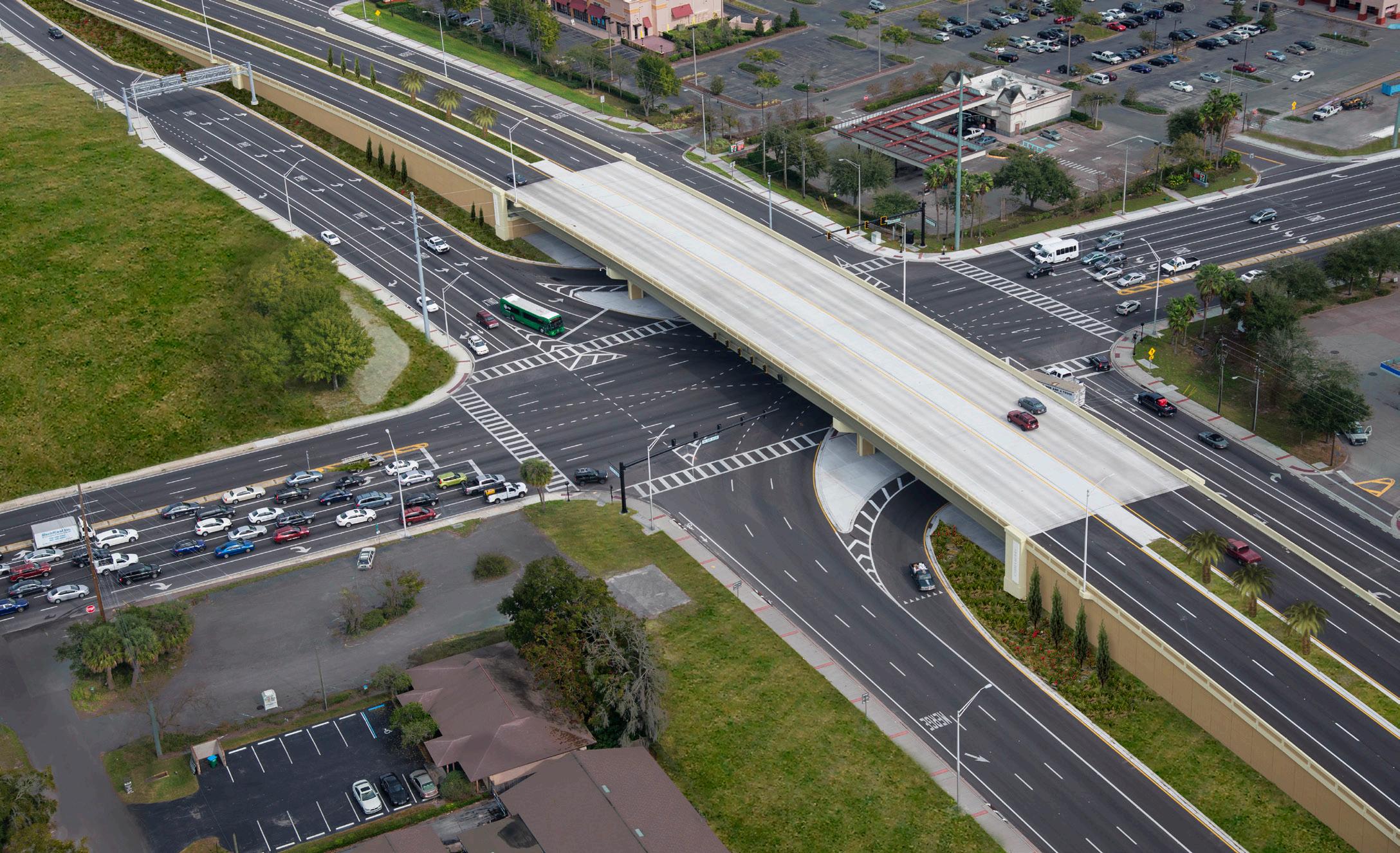

DRMP’s Alternative Delivery team is providing design for this $233 million interchange improvements project in conjunction with The Lane Construction Corporation. The project includes the design and construction of six new bridges, eight bridge widenings/modifications, four existing bridge coatings, and two existing bridge railing retrofits. The existing roadway is being widened from 2-lanes to 3-lanes in specific segments, improving existing drainage facilities, and providing complex temporary traffic control plans throughout each phase of the project to minimize disruption for all users.
Our team’s innovative alternative technical concept (ATC) includes a new dual-lane flyover bridge to accommodate the I-275 southbound traffic onto I-4 eastbound without needing complex widening. This approach eliminates over 100 detours by performing off-line construction and providing FDOT with the opportunity to add a new I-4 eastbound auxiliary lane to the Selmon Expressway exit just east of the downtown interchange.
DRMP provided design-build services for this $22 million project that was designed and constructed to alleviate traffic congestion, provide a single-point urban interchange (SPUI) at US 17/92 and SR 436 and included optimizing triple-left turns under the bridge, and upgrading stormwater systems. The project posed great challenges including accommodating the City of Casselberry’s aesthetic expectations, meeting a tight schedule from FDOT, and aiming to reduce project and long-term maintenance costs.
Structural engineers designed a SPUI to elevate four lanes of US 17/92 over SR 436 at what was previously an at-grade intersection. A 457-foot flyover bridge was designed for motorists to drive over SR 436 using concrete 96-inch-deep Florida-I Beams (FIBs). This groundbreaking bridge technology required the unprecedented delivery and installation of 13 of the longest single-piece prestressed concrete beams (209-foot) ever fabricated and installed not just in Florida but the United States. Each beam weighed 267,000-lbs. This project provides a major pipeline to motorists coming from I-4. It was designed and constructed with a $2 million savings to the Owner and a 25 percent reduction of the project schedule.
2017 American Council of Engineering Companies (ACEC) Merit Award in Engineering Excellence
2017 Florida Institute of Consulting Engineers (FICE) Grand Award in Engineering Excellence
2016 Prestressed Concrete Institute’s (PCI) “Design Award: Best Bridge with Main Span >150 Feet”
2016 DBIA “Best Project of the Year Award” - Transportation (Structures Category) - Florida Region
2016 Florida Transportation Builders’ Association (FTBA) “Best in Construction – Bridge”
2016 I Build America Construction Impact Award Finalist
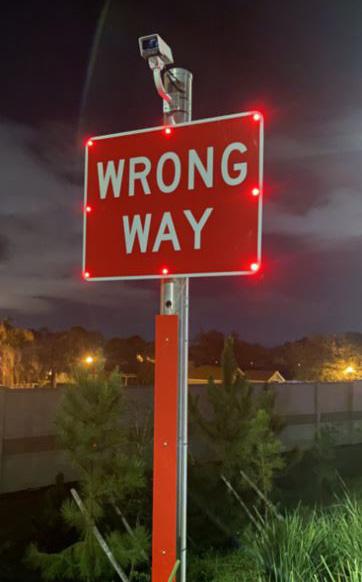
In partnership with CFX and the University of Central Florida. DRMP designed this the award-winning Intelligent Transportation System, which features the first innovative system-wide wrong way driver detection capabilities.
The project included product research, vendor coordination, field testing, development of specialized details for the installation, wiring, grounding and networking of the rapid flashing beacons and associated local hubs. The system uses three detection phases:
1) warning with prominent lights to warn drivers of their direction; 2) video detection to notify the Traffic Management Center (TMC); and 3) alert notifying the TMC to dispatch the Florida Highway Patrol. The system has been deployed on the CFX roadway network and is moving into its final project phase.
2017 Florida Institute of Consulting Engineers (FICE) Honor Award in Engineering Excellence
2016 International Bridge, Tunnel and Turnpike Association (IBTTA) “Toll Excellence Award for Toll Operations, Engineering & Maintenance”
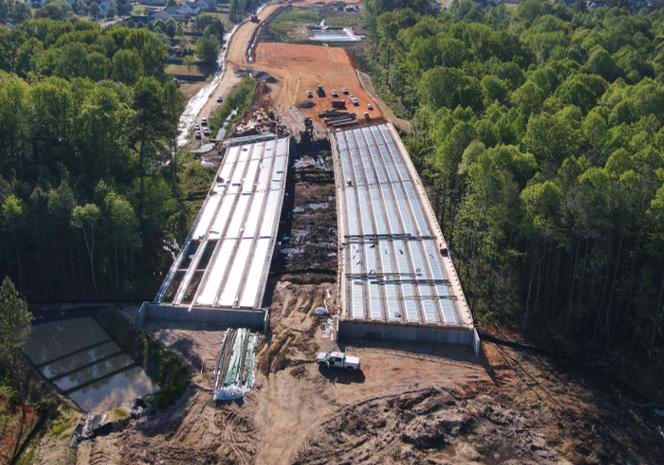
This $403 million design-build project extends the existing Triangle Expressway with a new, sixlane facility from east of US 401 to I-40. DRMP is responsible for a two-mile segment of this project, where we are providing roadway design, bridge design at three sites, and subsurface utility engineering services. The three bridge sites include Holland Church Road over NC 540, NC 540 over Juniper Branch, and Sauls Road over NC 540.
The Holland Church Road over NC 540 bridge includes two spans at 145-feet-9-inches with a 138-degree skew. The superstructure consists of 63-inch Florida-I Beams prestressed concrete girders and turn back MSE walls with moment slabs. The NC 540 over Juniper Branch bridge is a set of trapezoidal dual bridges on curved alignment, which provides for future widening and a cost-effective solution while maintaining the necessary stream buffers. The Sauls Road over NC 540 bridge is a two-span bridge with 119-foot-9-inch spans, 125-degree skew, and 45-inch Florida-I Beam prestressed concrete girder superstructure.
DRMP’s transportation experts provided limited access design services for a $162.3 million widening project for 6.5 miles of SR 91 from the SR 50 Interchange in Clermont to the Minneola Interchange. The project was widened from four lanes to eight lanes. The roadway reconstruction included two interchanges, phased maintenance of traffic including a diversion for the length of the project limits, and two roundabouts with landscaping and lighting adjacent to the CR 455 overpass structure.
The project replaced bridge structures at five locations (CR 438, Jones Road, Old Highway 50, CR 455, and Blackstill Lake Road), replaced one pedestrian overpass structure (West Orange Trail over SR 91), and added a new alignment overpass structure for Fosgate Road over SR 91. The most significant project challenge was providing traffic control during construction. This required extensive use of temporary walls and temporary bridges to convey mainline traffic at three bridge sites. The project included a Public Meeting, extensive coordination with local agencies and presentations to County Commissioners and City Councils along with the development of Interlocal Agreements.




